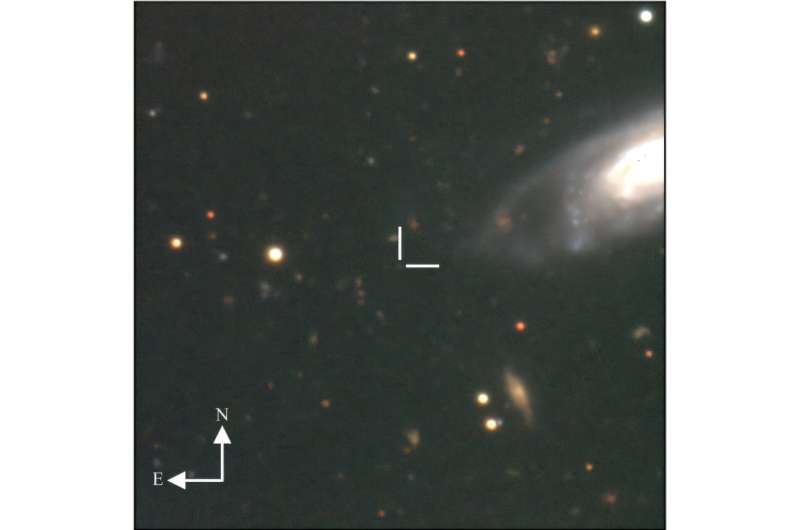A team of international astronomers has conducted extensive observations of a distant Type Ibn supernova designated SN 2024acyl, revealing significant insights into its properties and origins. The findings, published on November 6, 2025, on the arXiv preprint server, suggest that this supernova, located approximately 398 million light years away, presents a unique case due to its substantial distance from its host galaxy.
Type Ibn supernovae are characterized by their distinct spectral signatures, which display low-velocity helium emission lines. These explosive events are believed to result from the core collapse of massive stars, with their ejecta interacting with helium-rich circumstellar material. Generally, Type Ibn supernovae exhibit high peak luminosities and rapid evolution, with a swift rise to peak brightness of less than two weeks, followed by a quick decline.
SN 2024acyl was initially discovered on December 1, 2024, by the Asteroid Terrestrial-Impact Last Alert System (ATLAS). Its notable feature is its considerable offset from its host galaxy, CGCG 505-052, measuring approximately 114,000 light years. This unusual distance prompted a follow-up study led by Yize Dong from the Harvard-Smithsonian Center for Astrophysics (CfA), which involved multiband photometric observations primarily conducted through the Las Cumbres Observatory Global Telescope Network.
Unraveling the Mystery of SN 2024acyl
The observational campaign aimed to probe the nature of SN 2024acyl and understand its unusual location. The collected data confirmed that the supernova exhibits typical characteristics for its class. Notably, the redshift of SN 2024acyl, approximately 0.027, aligns with that of its host galaxy, reinforcing the connection between the two.
Interestingly, the study also indicated that the star formation rate at the explosion site of SN 2024acyl is low. This observation, combined with the significant offset from CGCG 505-052, raises intriguing questions regarding the origins of Type Ibn supernovae. The researchers noted that such conditions are not typically associated with massive stars, suggesting that the progenitor of SN 2024acyl may not follow the expected pattern.
The astronomers identified that SN 2024acyl is situated about 32,500 light years from the nearest significant light source in its host galaxy. This distance leads to speculation that the progenitor star could have been a runaway star, potentially ejected from its original location due to interactions within a dense stellar cluster or as a result of a supernova explosion in a binary star system.
Diversity Among Type Ibn Supernovae
In their analysis, the authors highlighted the diversity observed in the environments and spectral properties of known Type Ibn supernovae. This variation suggests the possibility of multiple progenitor channels for these explosive events, challenging the conventional understanding of their origins.
The research surrounding SN 2024acyl underscores the complexities of stellar evolution and supernova phenomena. As astronomers continue to investigate the nature of these distant explosions, they contribute to a deeper understanding of the universe’s dynamic processes.
The study was meticulously reviewed and fact-checked, ensuring the accuracy and credibility of the findings. As scientific exploration progresses, continued support for independent science journalism remains vital in disseminating important discoveries to the public.
